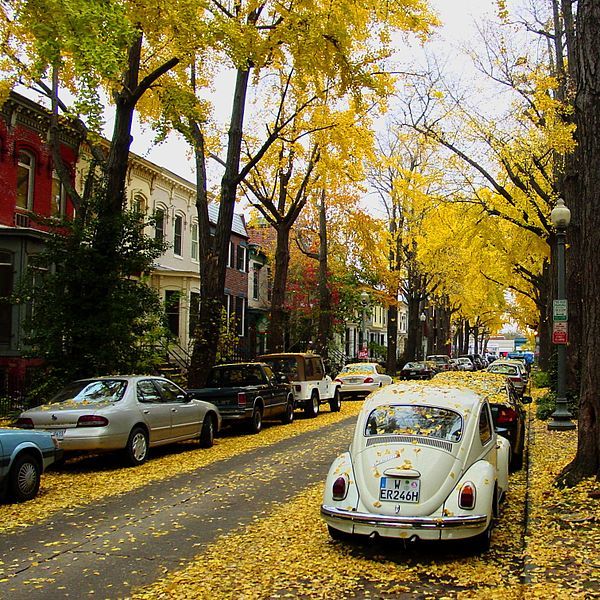Ginkgo : Physical Properties
The ginkgo tree can be recognized by its unique fan shaped, flat, green leaves and grayish, brown bark. The leaves alternate and are generally 2-3 inches wide. The ginkgo fruit is distinguishable by its potent and at times unpleasantly foul or rotten scent.
A fascinating aspect of the ginkgo tree is its unique growing and protective adaptations that have allowed it to persist for thousands of years. Although the ginkgo prefers to live in full sunlight with moist soil, the tree has adapted to live in almost any climate. Some of the most notable adaptations of the ginkgo include its ability to grow in shade, an ability to withstand freezing temperatures, and an impressive resistance to fungi and pests. Another interesting and unique adaptation are the ginkgo’s multiflaggelated motile sperm. The ginkgo is the only seed producing plants that has swimming male gametes, surely aiding its reproduction through the ages. Lastly, as further evidence of its fierce adaptive nature, it is resistant to pollution.
These strong adaptive capabilities combined with its aesthetically pleasing and soft appearance have made the ginkgo a unique and respected tree. In particular, the ginkgo has had a viable and prevalent presence in urban settings. In Len Phillip’s article “New Trees for the City”, he recommends the Ginkgo tree as one of the best growing trees for urban environments. University of Vermont students can see ginkgo trees surviving well on campus, despite the Burlington’s urban environment and its harsh winter climate. In addition to these resilient and adaptive capabilities, the ginkgo tree is also fire resistant. One famous ginkgo tree still grows in Hiroshima, Japan, having survived the atomic bombing during World War II. The temple next to the tree was completely destroyed while the ginkgo tree survived, exemplifying its miraculous resilience.

